You are probably reading about climate change and carbon emissions everywhere these days. Perhaps you are wondering what we at ZEST architecture are doing about reducing the carbon footprint of buildings. As architects we work in an industry that is responsible for about 40% of global emissions. But on the upside, this means that if we architects take action and design better buildings, our actions have an almost immediate effect. In this article we give you some background on the most important issues that affect the carbon footprint of buildings. Let’s start with the basics:
- What is the Paris climate agreement and what does it entail?
- Why do we need to reduce the carbon footprint of buildings?
- Tools for architects developed by the European Union
- What can you do to contribute to a net zero future?
1. The Paris Climate Agreement
The 2015 Paris agreement is a treaty that was adopted and agreed upon by the 196 participating countries at the UN Climate Change Conference (COP21) in Paris in 2015. This international, legally binding treaty strengthens the global response to the threat of climate change. It covers all aspects of the fight against climate change, both mitigation, adaptation and means of implementation.
It has three main long-term objectives:
- Prevent the increase in the average global temperature of the planet from exceeding 2ºC compared to pre-industrial levels
- Increase the capacity to adapt to the adverse effects of climate change. Promote climate resilience and development with low greenhouse gas emissions.
- Ensure the coherence of all financial flows with a climate-resilient and low-emissions development model.
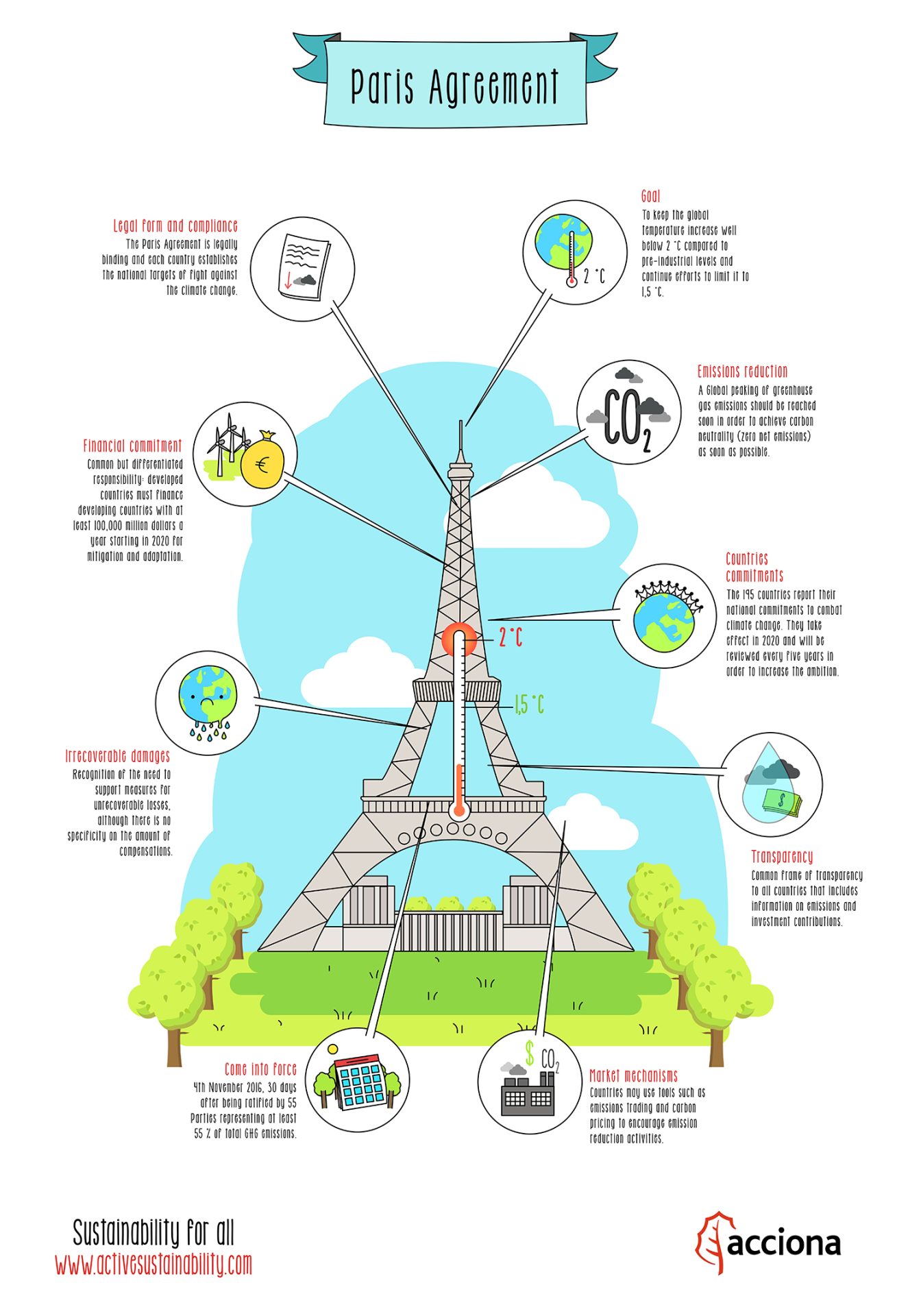
Graphic source: Sustainability for All
Implementation of the Paris Agreement requires economic and social transformation, based on the best available science. The Paris Agreement works on a five-year cycle of increasingly ambitious climate action. The participating countries have been submitting their national climate action plans since 2020. On this path towards reducing their carbon footprint, Spain has created a so-called “Long-Term Decarbonization Strategy”. This strategy forms a roadmap which explains how to advance towards our carbon neutral goal in 2050. It has intermediate milestones in 2030 and 2040. It is, therefore, a very close reality already.
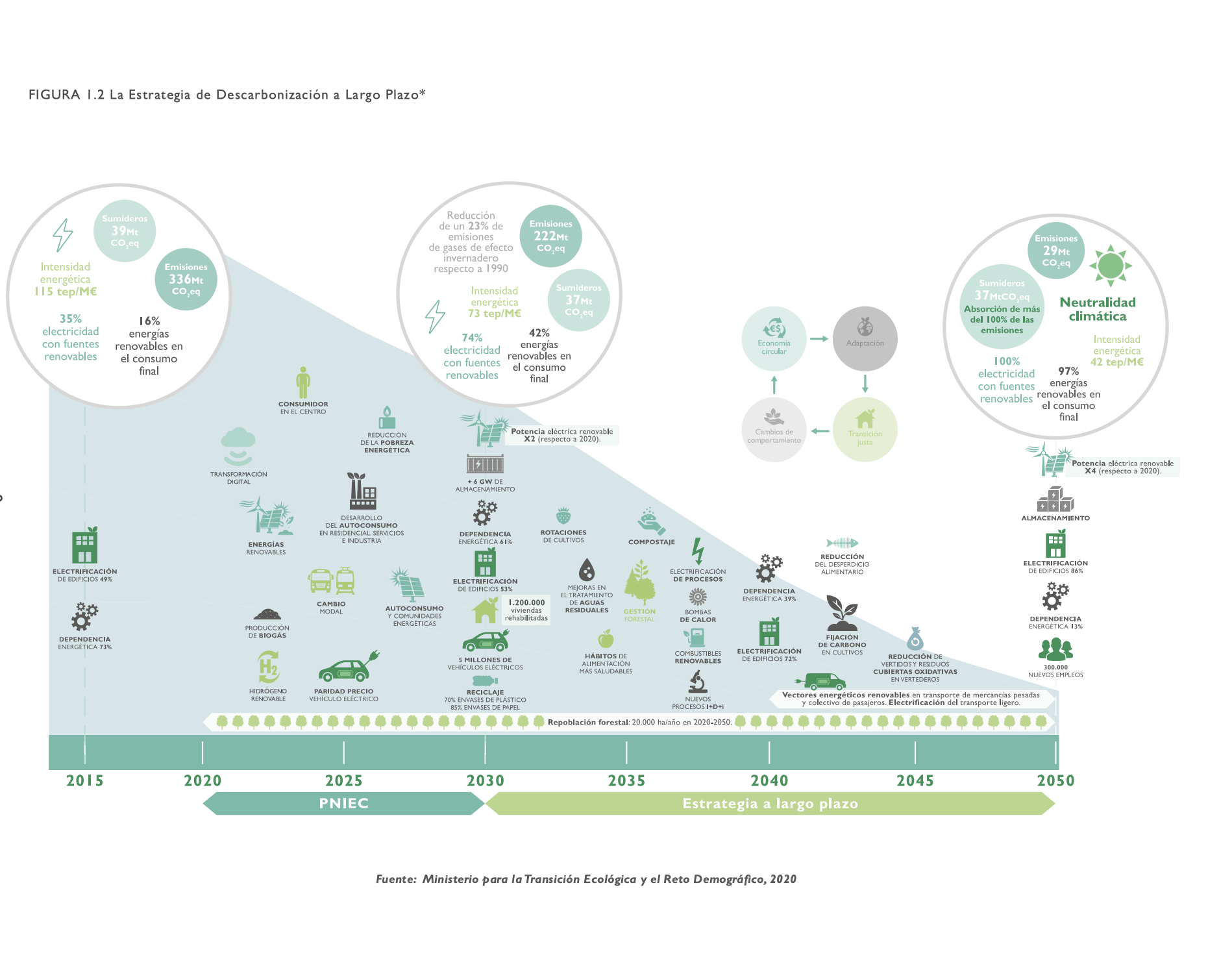
Graphic source: Ministry for the Ecological Transition and Demographic Challenge, 2020 (Spanish Government)
2. Why reduce the carbon footprint of buildings?
Buildings are responsible for approximately 40% of greenhouse gas (GHG) emissions, basically CO2 equivalent (CO2e). They are responsible for 50% of the extraction of materials, 50% of the total energy consumed, a third of the water consumption and more than 30% of the waste generated. For this reason, the building sector has a fundamental role in achieving the decarbonization objectives set out for 2050. Only by reducing the carbon footprint of buildings, can we achieve a net-zero future.
The thing about buildings is, they take a relatively long time to plan and construct. And after they’ve been built, they will be used for decades more. This means that if we want to drastically reduce our carbon footprint by 2050, we need to build better buildings now! Whatever is constructed today will still be there in 2050. Therefore, we simply cannot afford to build any more buildings that do not have a low carbon footprint. And it is a bad investment to invest in buildings that are not ready for the future. Or let us put it another way, if you commission a building with a low CO2 footprint today, such as a passive house, you will be taking a radical piece of climate action.
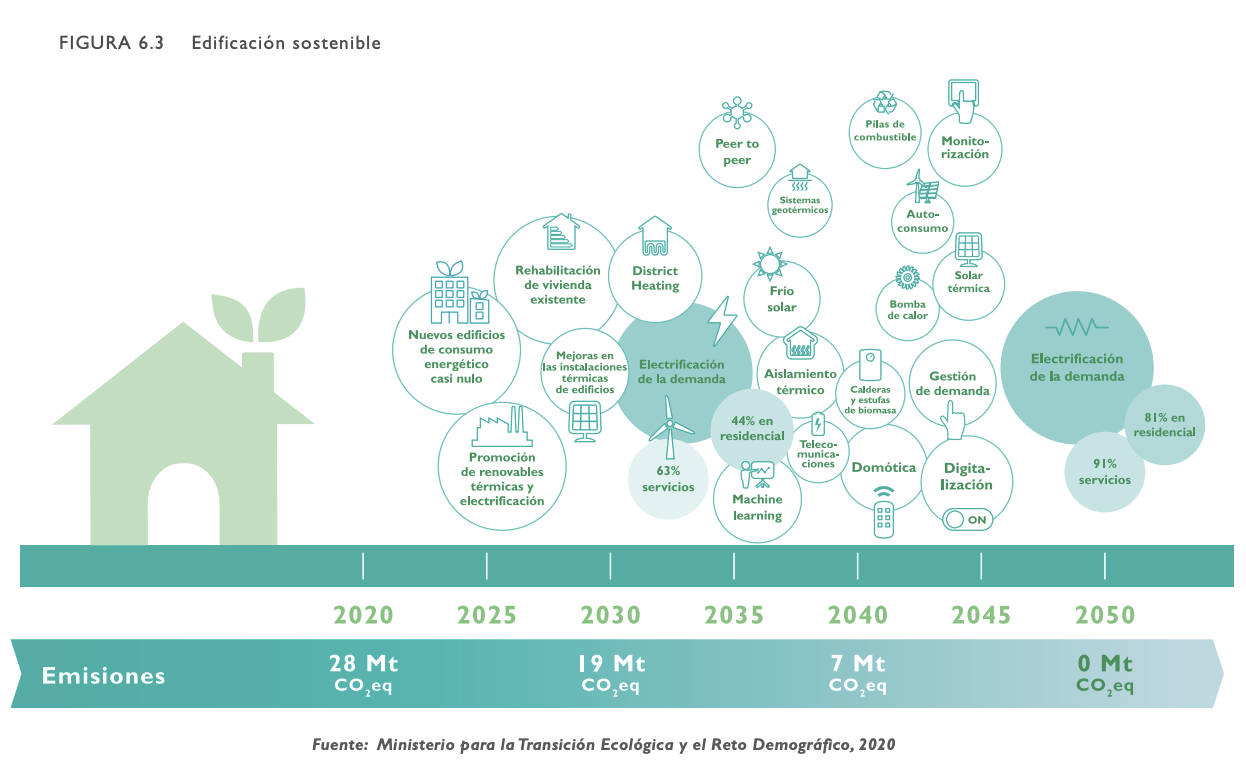
Graphic source: Ministry for the Ecological Transition and Demographic Challenge, 2020 (Spanish Government)
3. Tools for architects developed by or within the European Union
In the framework of the Paris agreement, the European Union aims to be climate neutral by the year 2050. That means that the EU has set the goal of having an economy with zero net greenhouse gas emissions in 2050. This goal constitutes the core of the so-called European Green Deal and is in line with the European commitment to increase global climate action in line with the commitments of the Paris Agreement.
The European Union defined a series of regulations in order to help the member states reach this goal of climate neutrality. Not surprisingly, many regulations apply to the building industry, including the obligation to build Near Zero Energy Buildings, which was already introduced in 2020. At ZEST architecture we have been building Near Zero Energy Buildings for a few years now, and many of our projects are even more energy efficient than the NZEB, because many of our projects are passive houses.
However, reducing the carbon footprint of buildings over their entire lifetime, means we need to do more. We need to design not only a building that is energy efficient, but also built in the right way with a responsible choice of materials. This means architects will need to be up to date with all the international European standards, directives and regulations, which define how to measure and determine the CO2 emissions and environmental impact of buildings.
Fortunately, the European Union has been extremely proactive in developing tools for the construction industry, some of which were presented during the Second edition of the Conference “Decarbonizing architecture” Organized by the Catalan Board of Architects (COAC) on November 22, 2023 and which Co Govers and Maria Matamala of ZEST attended.
3.1 Energy Eficiency of Buildings Directive (EPBD)
This is a directive from the Department of Energy of the European Commission that hopes to be approved at the end of this year 2023. It forms a part of various measures to comply with what is included in the decarbonization strategy in the building sector explained above. This directive sets minimum standards and will make it mandatory to measure the CO2 footprint of every building.
It is expected that in 2026 there will be an update of the Technical Building Code (CTE) that includes all the content of this directive.
3.2 European Taxonomy
Taxonomy is a classification system established by the European Union that determines whether an economic activity can be considered “sustainable” or “green.” The European Union created this tool with the purpose of facilitating and increasing sustainable investment, as well as eliminating “greenwashing”. Greenwashing is a practice in which companies provide misleading or false information about the sustainability of their products or services.
Companies subject to this regulation are required to disclose the measures they take on issues related to the environment, social impact and governance (ESG).
It came into effect in 2020 and establishes gradual objectives in the transition towards a more sustainable European economic model with key deadlines. 2027 is the deadline for all listed companies (including SMEs – Small and Midsize Enterprises) to report according to the taxonomy. It affects both companies and financial institutions, as well as the investors involved.
3.3 DGNB Certificate
The German Sustainable Construction Council (DGNB) has created its own Certification system so that sustainable construction is applicable in practice, measurable and, therefore, comparable and that integrates the verification of European taxonomy as a standard part of the certification through ESG verification.
In terms of content, the DGNB has based their Certificate System on three essential paradigms that differentiate it from other certification systems on the market:
- Life cycle assessment
- Holistic approach
- Performance orientation
The DGNB System comprises the three central areas of sustainability: ecology, economy and sociocultural quality, which have equal weight in the evaluation. With regards to the holistic approach, the DGNB system also evaluates location, technical quality and process.
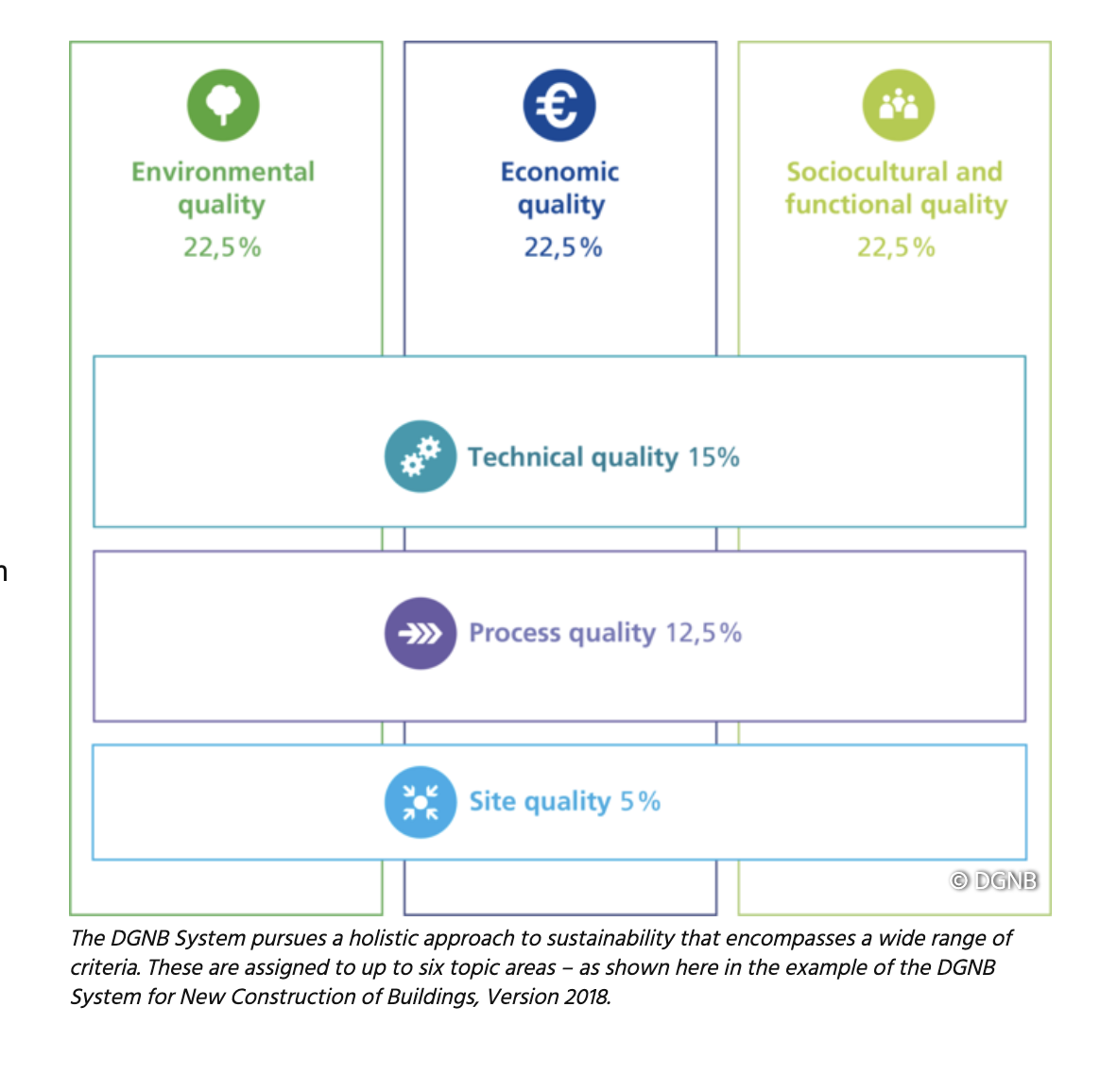
The certificate is available for: buildings already in use, existing buildings and renovations.
As a planning and optimization tool, it helps all agents involved in construction implement good quality sustainable products. This certificate is also very useful in countries like Germany when requesting financing; it is becoming an essential requirement for some banks when receiving aid or loans with better conditions.
This independent certification process serves as a transparent quality control, in order to achieve Platinum, Gold or Silver status. It serves as an inspiring example that can be rolled out in other Member States.
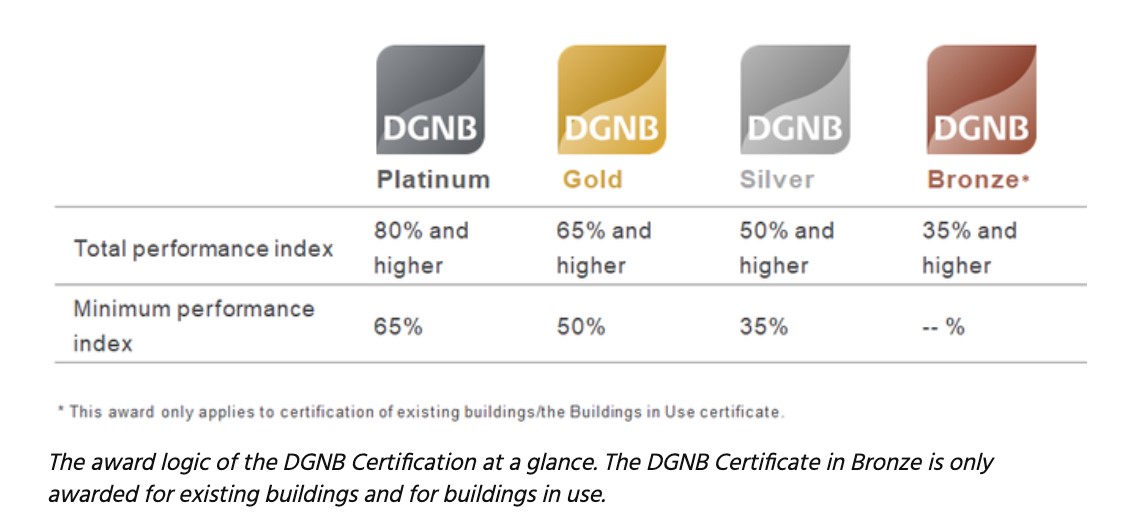
3.4 LEVEL (s)
There are already numerous “green” certifications for buildings, such as LEED or BREEAM. However, these lack a non-commercial criterion to measure the environmental impact of buildings.
This is why the European Commission created Level (s): a voluntary framework that building professionals in Europe can adopt to measure, report and share the environmental performance of their buildings. It offers a system to measure and propose improvements from the design up until the end of the building’s useful life. It can be applied to residential buildings or offices and is a very helpful tool for reducing the carbon footprint in buildings.
Level(s) uses indicators to measure carbon, materials, water, health, comfort and climate change impact over the entire life of a building and is based on 6 macro objectives:
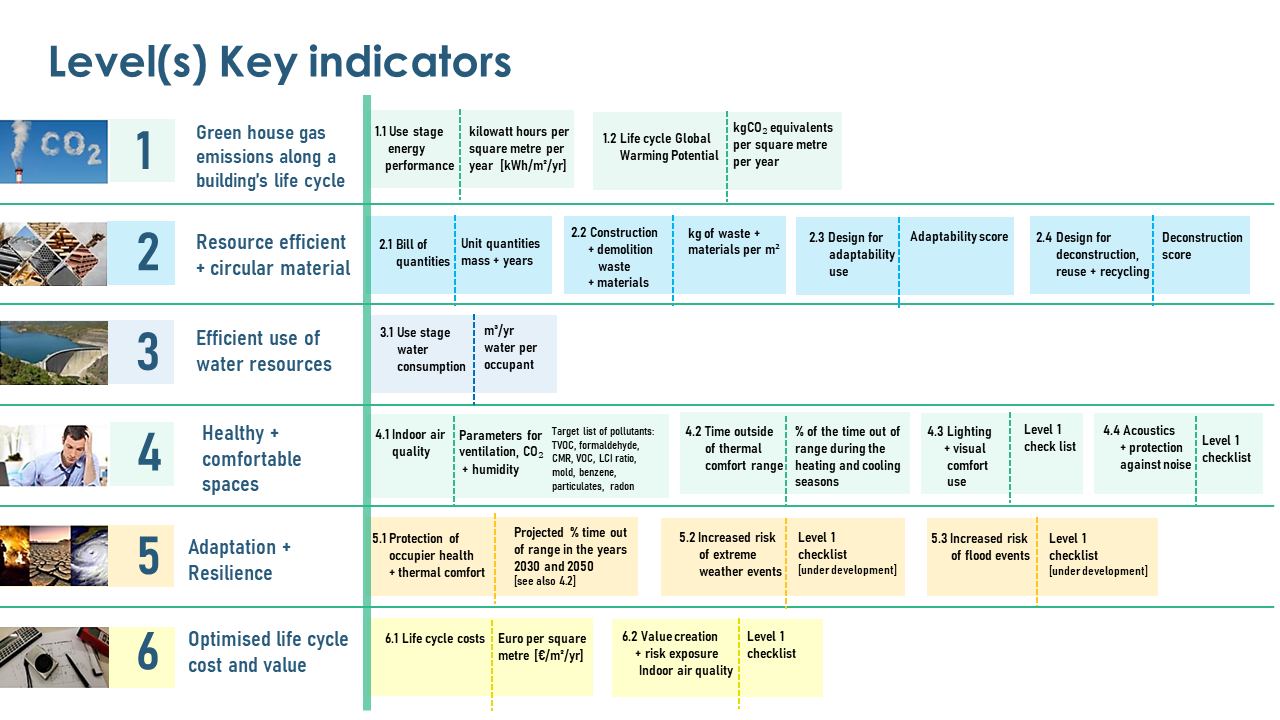
Graphic source: Irish Green Building Council
And you can work at three levels: design, construction and monitoring of the built reality.
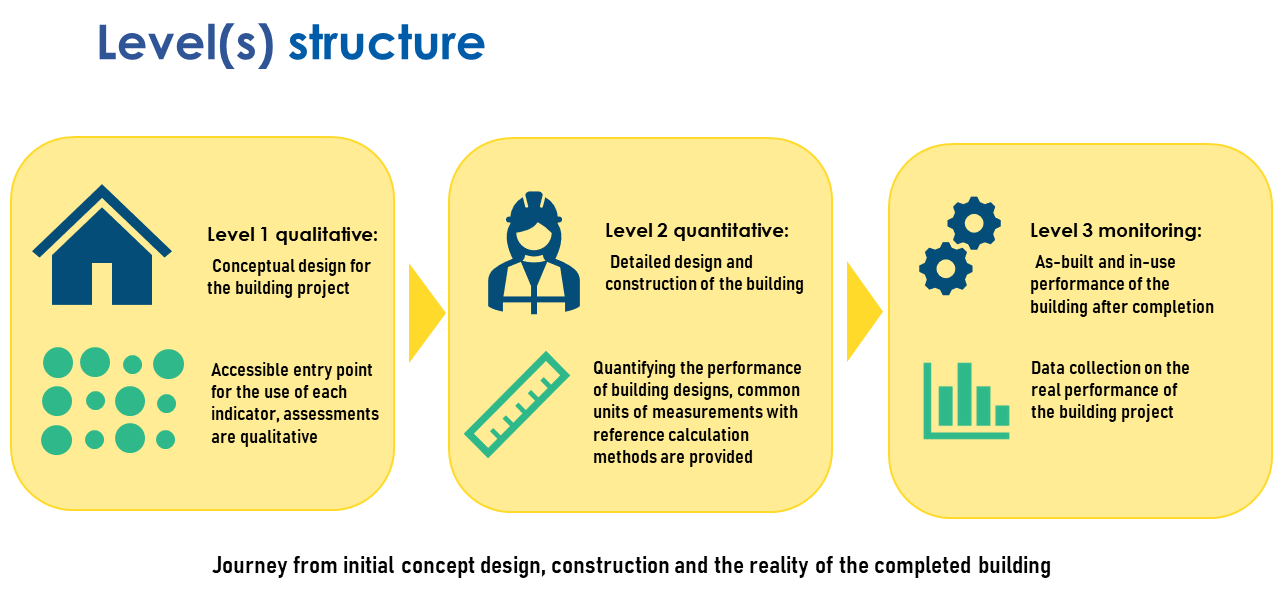
Graphic source: Irish Green Building Council
The most important feature of Level(s) is the fact that it takes a life cycle approach. This entails analysing the performance of any building over its entire life. Level(s) has been developed for architects, investors, designers, engineers and construction companies. At the moment there is a Beta version available, it is free and open to everyone.
At the Catalan regional level, the different institutions are also making various tools available to professionals:
The ITEC (Institute of Construction Technology of Catalonia) will make an effort to collect all information regarding the life cycles of all materials in its database and the Col.legi d’Arquitectes de Catalunya ( COAC) will put their CO2 calculation tool into operation this year.
4. What can YOU do to contribute to a net zero future?
The idea that a building with a low carbon footprint during its lifetime will be expensive, if a myth that we must fight. The IFC Green Buildings Report has researched the cost implication of sustainable building, and the additional cost of a green building is minimal, if building green is something taken into account from the start. At ZEST architecture we know from experience that good green design does not have to be expensive.
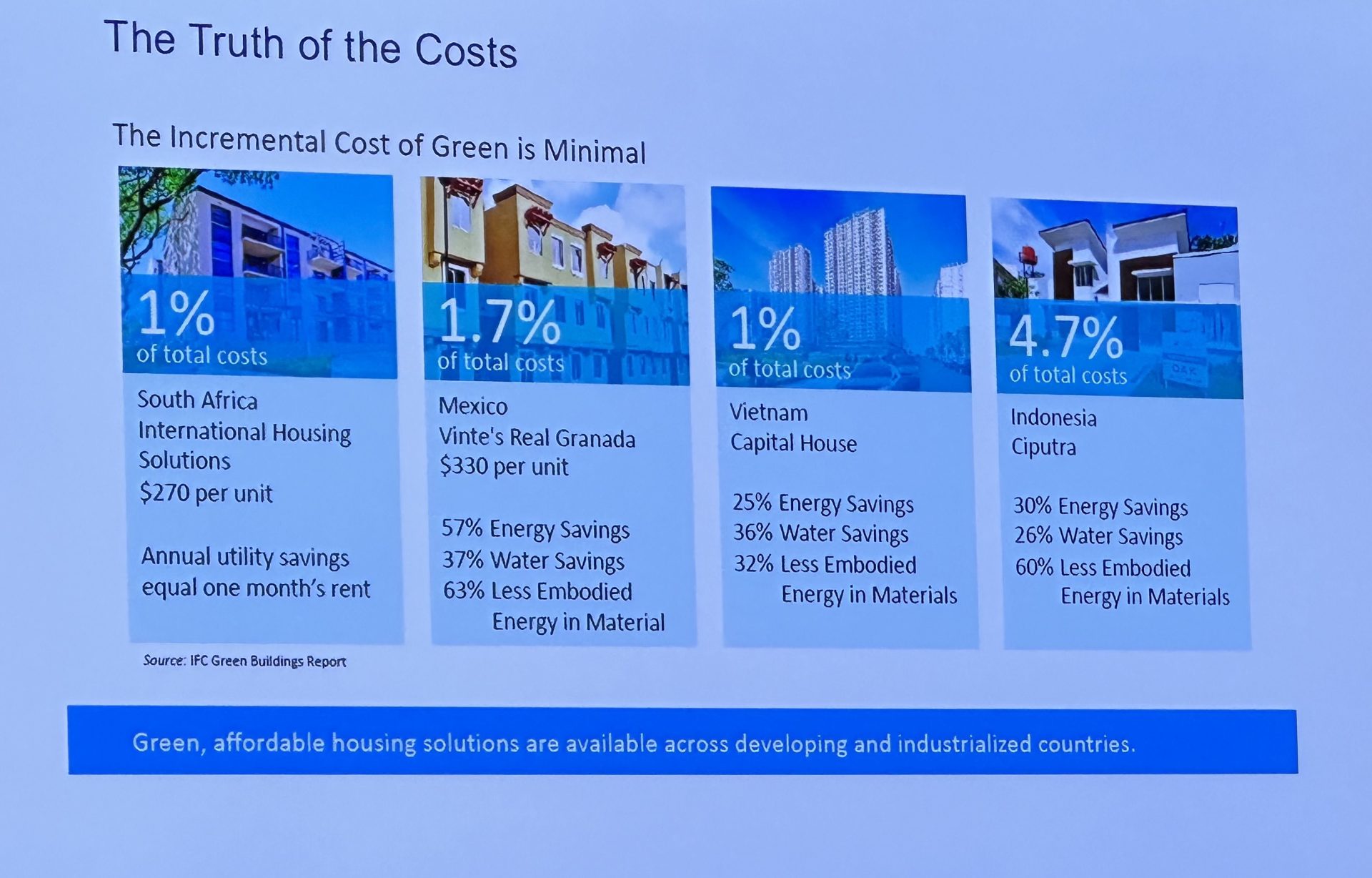
Graphic source: IFC Green Buildings Report
We need to take reducing the carbon footprint of buildings into account from the design phase, if we are to succeed. To do this, you will need to work with informed professionals who are entirely and sincerely committed to this path.
Do you want to make sure that your investment in a new buildings is a good investment? Minimizing the carbon footprint of your building may prove to be the best investment you ever made. A building with a minimal energy consumption and able to withstand the changing climate.
Talk to us. At ZEST Architecture we are up to date with all the tools to help you on this path. Phoning ZEST might just be the most radical piece of climate action you ever took…

